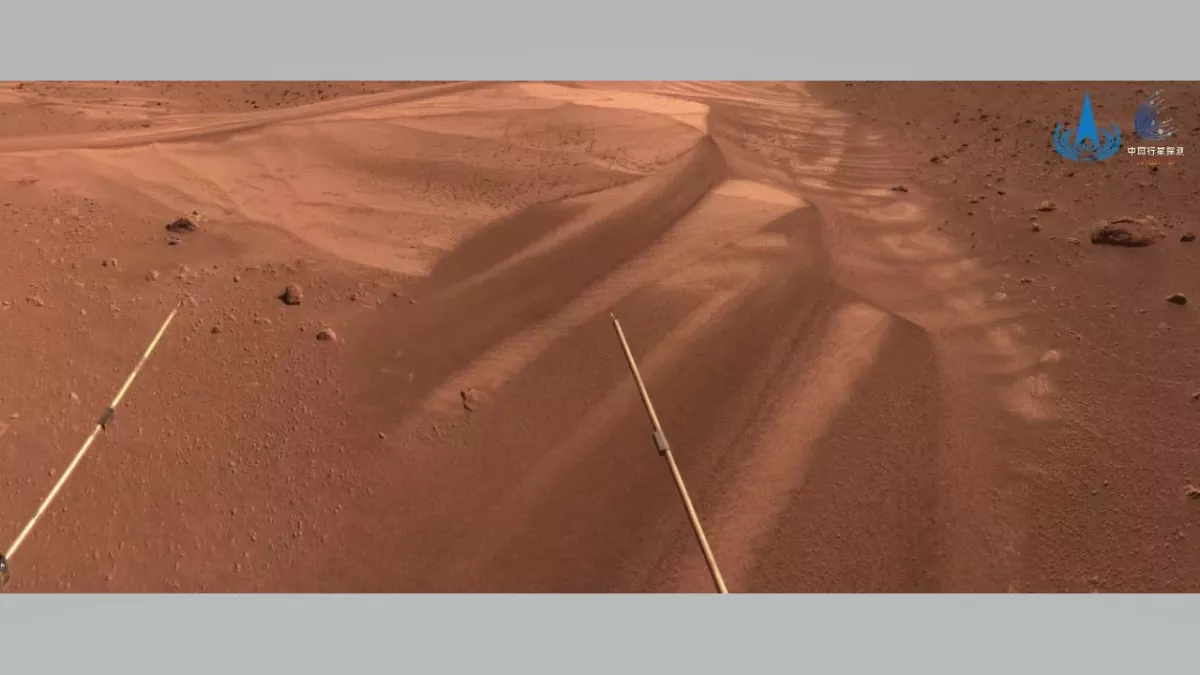Scientists propose new theory to explain sand waves on Mars
- March 13, 2024
- 0
The sand waves are fascinating. They are symmetrical, but the wind that causes them is not symmetrical at all. They can also be found on Mars and Earth.
The sand waves are fascinating. They are symmetrical, but the wind that causes them is not symmetrical at all. They can also be found on Mars and Earth.

The sand waves are fascinating. They are symmetrical, but the wind that causes them is not symmetrical at all. They can also be found on Mars and Earth. It would be even more interesting if the same effect found on Mars could be found here on Earth. What if a single theory could explain their formation on two different planets in our solar system?
Physicists from Ben-Gurion University of the Negev, Prof. Hezi Yizhak and Prof. Yitzhak Katra and colleagues from Denmark, Germany, Italy, China and the United States report in the journal Nature Geology.
Sand waves photographed on Mars by NASA’s Curiosity rover in 2015 showed two different patterns; a large surge (on the meter scale) and a shorter “shock” surge (on the decimeter scale). The prevailing theory put forward since then states that smaller-scale ripples are formed by the impact mechanism of wind-borne particles, like normal ripples on Earth, while larger ripples are formed due to hydrodynamic instability, similar to underwater ripples.
Moreover, it was believed that the physical conditions that produced them on Mars could not produce them on Earth.
However, Professor Yizhak and Professor Katra have experimentally proven that such a phenomenon can exist on Earth, using the Ben-Gurion University wind tunnel and the Aarhus University Mars Tunnel; But we hadn’t noticed it yet because we didn’t know how to look. for him.
Professor Yizhak explains that it was not easy to simulate Martian sand because it is finer than sand on Earth, but the progress came when they decided to try small glass balls to represent fine grains of sand.
Additionally, an international research team has proposed a unified theoretical framework to explain sand ripples on Mars and Earth. At the most basic level, wind-driven sand waves on Mars are similar to water-driven sand waves on Earth.
“Much more research, both field and experimental, is needed to confirm our theory, but it is surprising to propose something so radically new in a field that I have studied for over 20 years. It is exciting to go out and try to find on Earth what you can clearly see on Mars.” transmitter,” says Professor Yizhak.
Source: Port Altele
As an experienced journalist and author, Mary has been reporting on the latest news and trends for over 5 years. With a passion for uncovering the stories behind the headlines, Mary has earned a reputation as a trusted voice in the world of journalism. Her writing style is insightful, engaging and thought-provoking, as she takes a deep dive into the most pressing issues of our time.